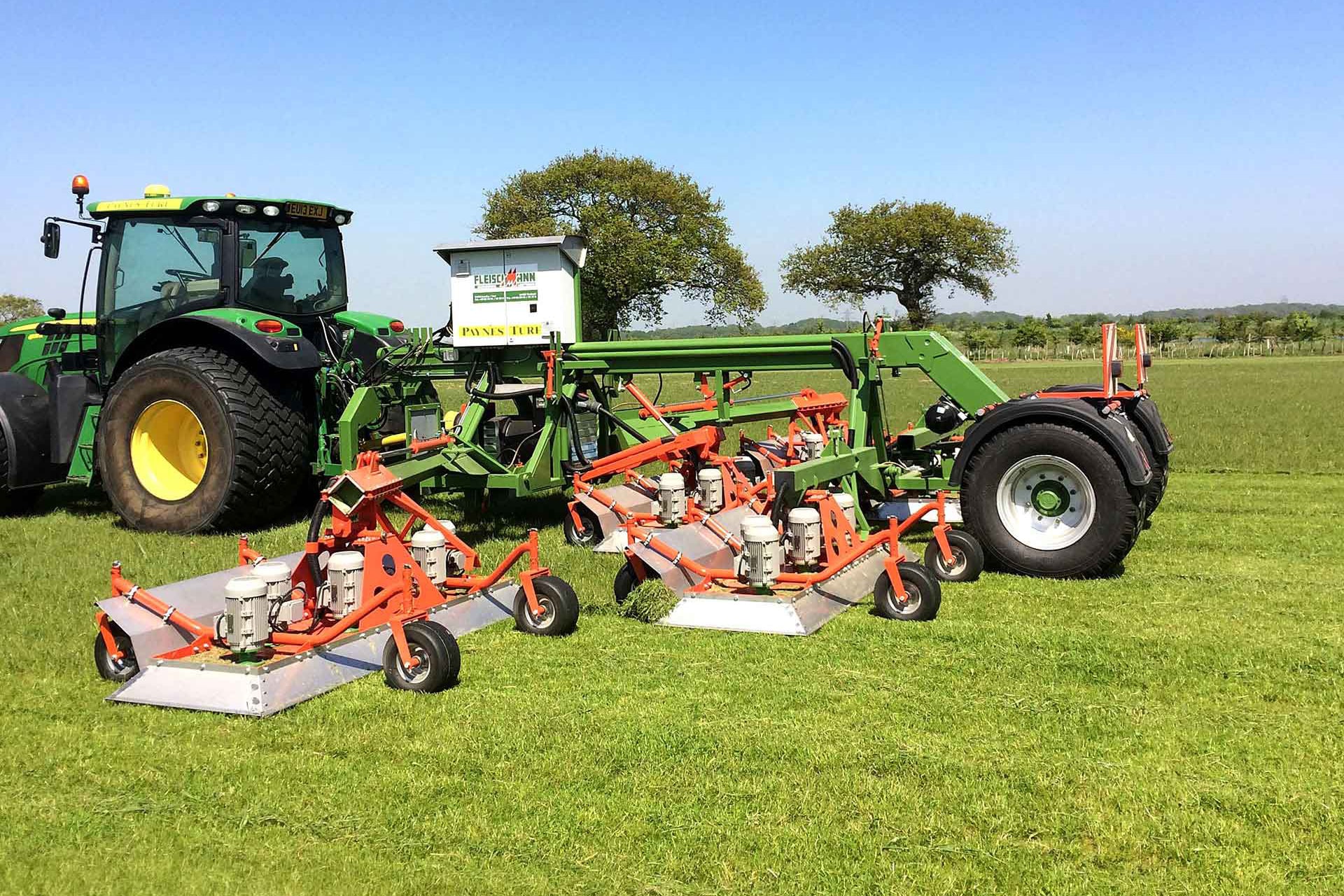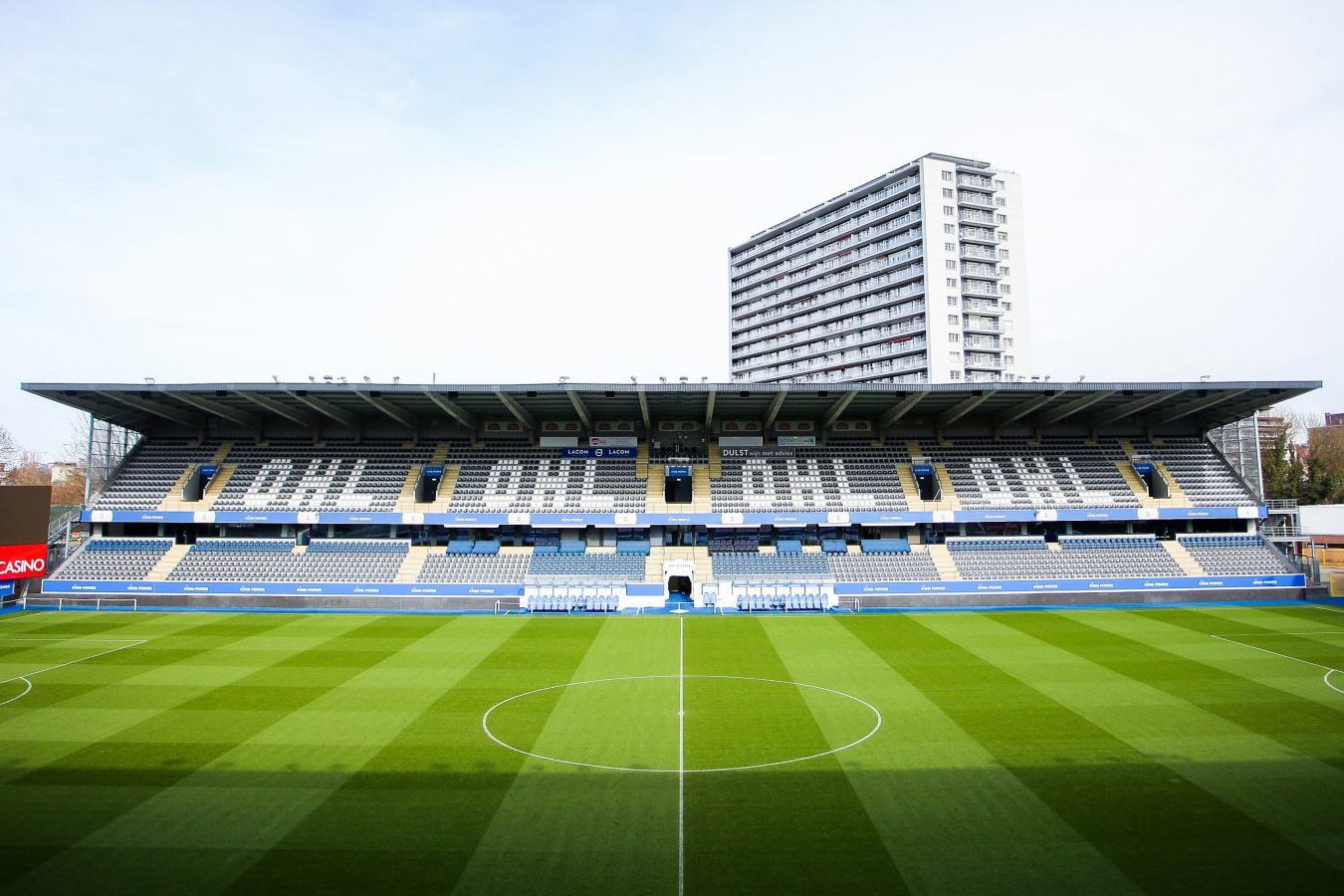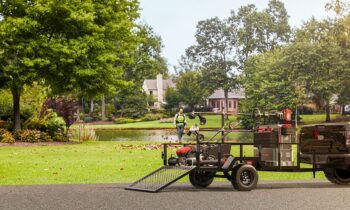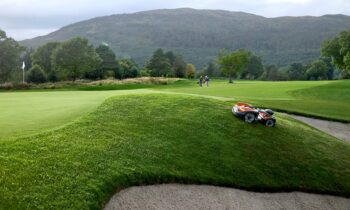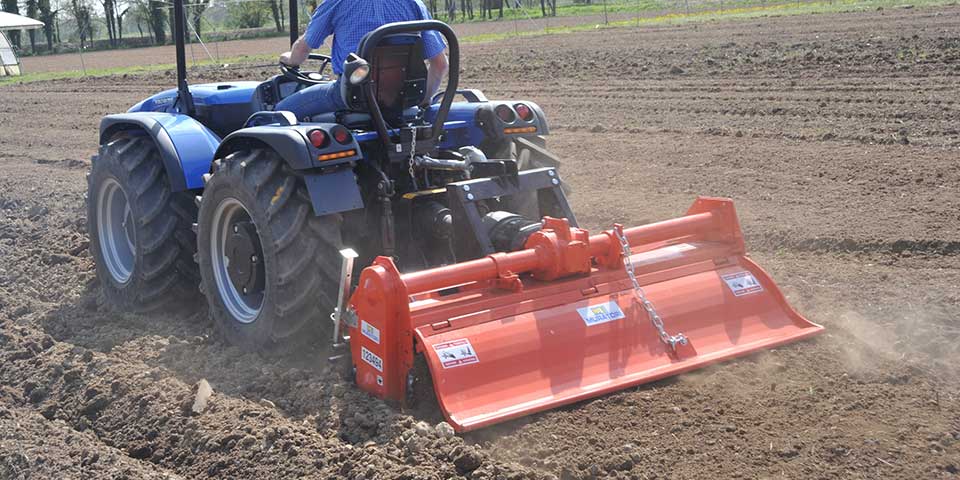
Techniques for a seed-ready field
Seeding a site can be done in several ways. The method used depends on the type of soil, the accessibility of the site and the basic machinery available. A field can be prepared for seeding with the traditional cultivator and rotary harrow, but nowadays the overtop cultivator is much more commonly used. Below you can find the advantages and/or disadvantages of both methods.
Milling the soil
A rotary tiller consists of a chassis with a horizontally mounted rotor. Curved or angular blades are mounted on this rotor. The rotor rotates with the direction of rotation of the wheels of the base machine (single axle or tractor). The rotating blades crumble the soil into smaller clods. The slower the driving speed, the better the crumbling. The number of blades mounted on the rotor also affects the finish. Milling the soil allows extra air into the soil, giving it a larger volume and improved structure, making it more fertile. Because the rotor turns with the direction of rotation of the wheels, a tiller has less resistance and consequently does not require much power from the base machine.
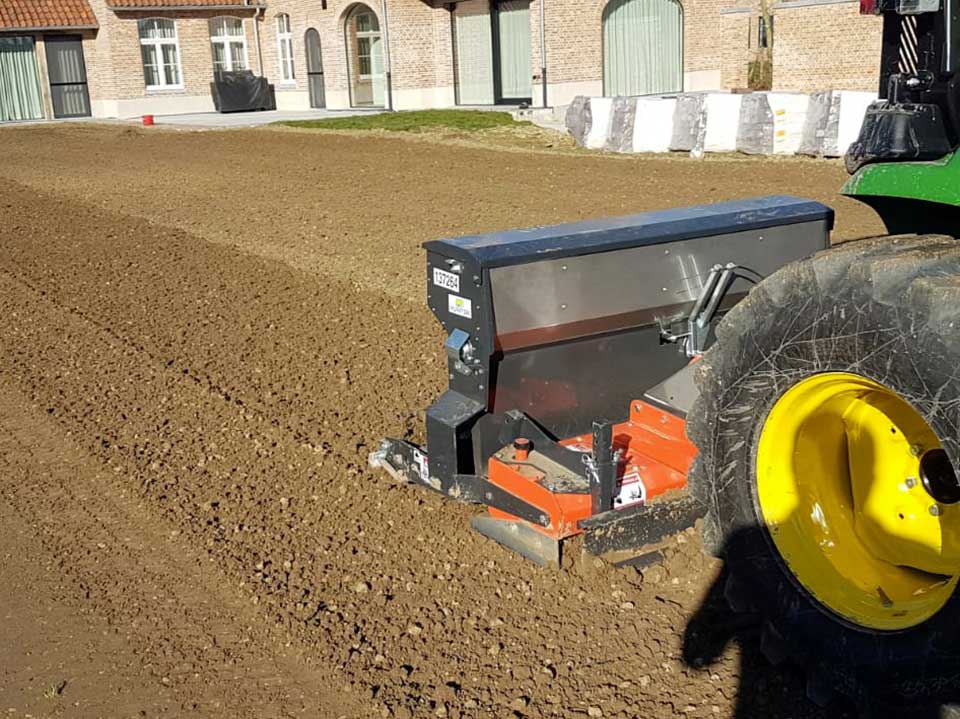
After tilling, a field is not yet ready for seeding. Clods still remain. So at least one more pass with a rotary harrow is needed to seed.
Seeding with rotary harrow
After milling, there are still too large lumps of soil left over for immediate seeding. The roto harrow can solve this. The angular blades of a rotor harrow turn horizontally and consequently grind the still too large clumps of soil. A rotary harrow is also equipped with a leveling blade and a pressure roller, to level the ground at the back.
A mesh anilox roller (with a spiral inside to push soil out) will usually be used for seeding. Other possible rollers are a cage roller or a smooth roller. The rotary harrow can be equipped with a seeder. Thus the soil is both leveled and seeded in a single pass.
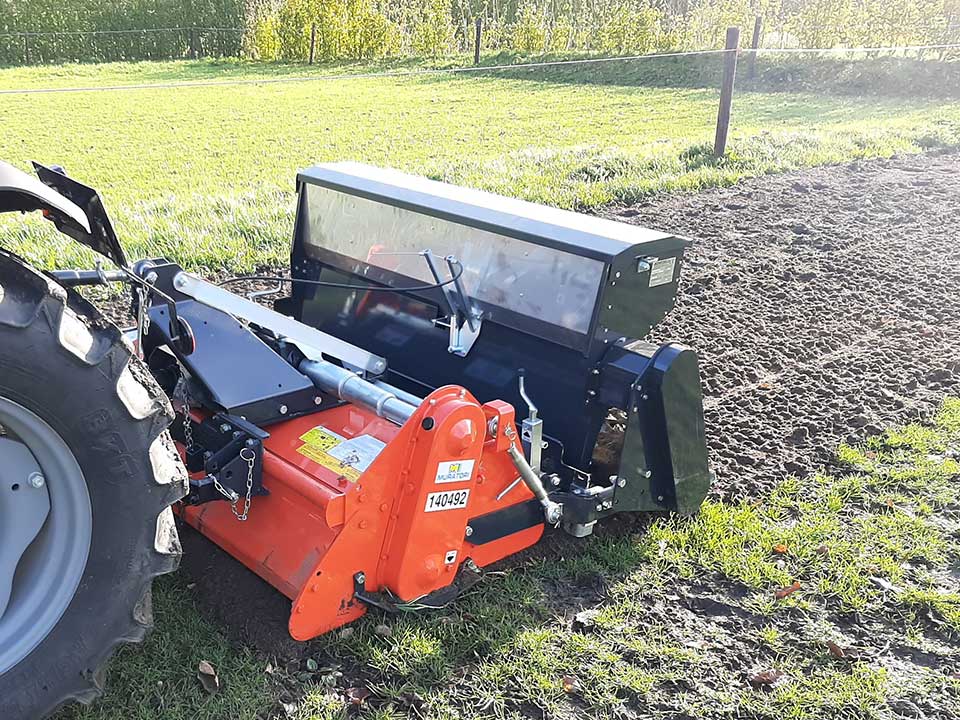
Perfect seedbed with overtop cultivator
The difference between a tiller and an overtop tiller is in the direction of rotation of the rotor. The rotor of a cultivator rotates in the direction of the tractor, while the rotor of an overtop cultivator rotates in the opposite direction. The overtop cultivator is always equipped with a leveling blade and pressure roller. Due to the opposite direction of rotation, larger clods and stones are buried under a layer of finely ground earth. This ensures a perfectly even seed bed. An overtop cultivator can be equipped with a seeder, allowing the soil to be ground, leveled and seeded in a single pass. Since an overtop cultivator has a counter-rotating rotor, it requires more power from a tractor than a normal cultivator. The working speed of an overtop cultivator is also slower than a normal cultivator.
Pivabo has solution
Pivabo, the Belgian importer of Kersten and Muratori brands, among others, offers a complete range of professional tillage implements. Pivabo constantly has an extensive stock of machines that can be delivered within 48 hours. The Pivabo website makes it easy to find the machine you need. Pivabo also has a number of technical advisors, who help customers find the appropriate machine for the work to be performed.
